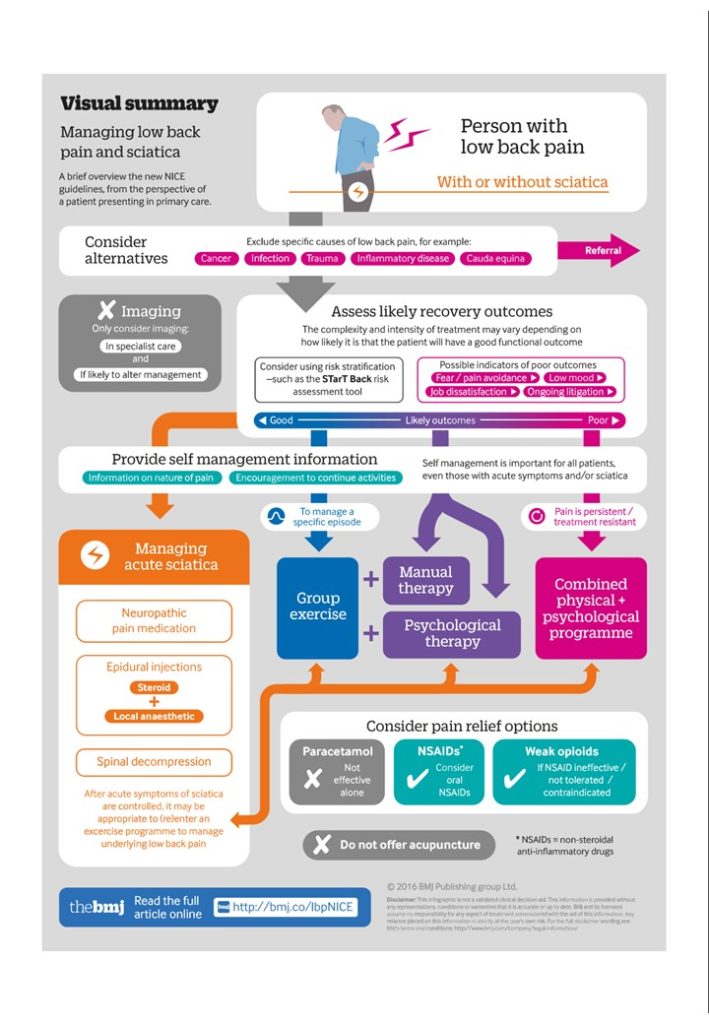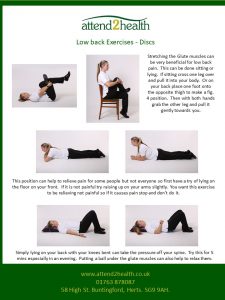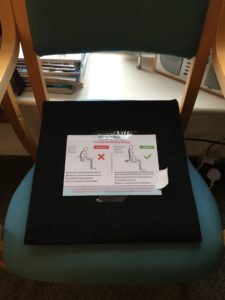Back pain is very common and most people will suffer one or more episodes in their lifetime. In many cases it starts suddenly and gets better quickly. However back pain can be debilitating and persistent. It can also be associated with other symptoms such as leg pain or sciatica.
There are many types of back pain. If you want to know more about the different types of back pain sign up to our Silver membership. We have listed in diagnoses the common types we see but it is always best to seek advice if you are in pain and not improving.

Successful treatment is dependant on finding out the type of back pain you are experiencing. At attend2health we are able to diagnose where your pain is coming from and create a tailored treatment plan to relieve your suffering.
There are also exercises you can do to help. If you sign up to the silver package you will see some examples on this site however they should be completed pain free and it is advisable to check with a health professional first.
Attend2health offers a free 15 minute chat for you to see if our health professionals are the right ones to help you on your road to recovery. Call us now on 01763 878087 for more information or visit our facebook site https://www.facebook.com/attend2health/ to see some of our honest reviews.
If you do decide to book to see one of our Chiropractors, Osteopaths or Physiotherapists we would go through a case history to try and find out whats causing your pain. We would ask questions like how long you have had the pain, any aggravating factors, does the pain travel anywhere or just stay in the same place, does it stop you sleeping? These will all help us in determining what's wrong.
We would then do an examination where we would check the movement in your joints. We would feel for any joints that might be locked and check the muscles for any tightness. We would also check your reflexes and sometimes your blood pressure to help us come to a diagnosis.
The British Medical Journal have produced this great info graphic that we use during an examination to make sure the correct treatment is given.

There are many types of back pain. If you want to know more about the different types of back pain sign up to our Silver membership. We have listed in diagnoses the common types we see but it is always best to seek advice if you are in pain and not improving.

Successful treatment is dependant on finding out the type of back pain you are experiencing. At attend2health we are able to diagnose where your pain is coming from and create a tailored treatment plan to relieve your suffering.
There are also exercises you can do to help. If you sign up to the silver package you will see some examples on this site however they should be completed pain free and it is advisable to check with a health professional first.
Attend2health offers a free 15 minute chat for you to see if our health professionals are the right ones to help you on your road to recovery. Call us now on 01763 878087 for more information or visit our facebook site https://www.facebook.com/attend2health/ to see some of our honest reviews.
If you do decide to book to see one of our Chiropractors, Osteopaths or Physiotherapists we would go through a case history to try and find out whats causing your pain. We would ask questions like how long you have had the pain, any aggravating factors, does the pain travel anywhere or just stay in the same place, does it stop you sleeping? These will all help us in determining what's wrong.
We would then do an examination where we would check the movement in your joints. We would feel for any joints that might be locked and check the muscles for any tightness. We would also check your reflexes and sometimes your blood pressure to help us come to a diagnosis.
The British Medical Journal have produced this great info graphic that we use during an examination to make sure the correct treatment is given.

Lumbar Facet Irritation
This is when the joints in your spine become stiff and locked and cause the muscles to go into spasm to protect the area. It can also be known as mechanical low back pain as generally the nerves are not involved. Causes of this include poor posture, prolonged sitting or even muscular tension due to stress.
Lumbar Disc Prolapse
This can also be called a slipped disc and it is where some of the outer fibres of the disc tear and cause the disc to press against a nerve. When the nerve is aggravated it causes pain down one or both of the legs. If the pain goes down both legs and you experience problems going to the toilet then you must seek immediate help. When the disc is involved the pain can be quite severe and quite often it is worse in the morning when the discs contain the most water.
Piriformis Syndrome
This can present in a very similar way to a prolapsed disc with pain going down the leg but it is caused by the piriformis muscle in the buttock being extremely tight and pressing against the sciatic nerve there. By releasing the piriformis the pain can be relieved.
Wear and Tear and Stenosis in the Lower back
As we get older the discs narrow and you can get a little bit of bony growth from the vertebra (osteophytes.) For most people this can just be felt as a bit of stiffness in the spine but for some people it can prevent them from walking long distances and cause pain into the leg.
Upgrade to Silver membership to see more.
This is when the joints in your spine become stiff and locked and cause the muscles to go into spasm to protect the area. It can also be known as mechanical low back pain as generally the nerves are not involved. Causes of this include poor posture, prolonged sitting or even muscular tension due to stress.
Lumbar Disc Prolapse
This can also be called a slipped disc and it is where some of the outer fibres of the disc tear and cause the disc to press against a nerve. When the nerve is aggravated it causes pain down one or both of the legs. If the pain goes down both legs and you experience problems going to the toilet then you must seek immediate help. When the disc is involved the pain can be quite severe and quite often it is worse in the morning when the discs contain the most water.
Piriformis Syndrome
This can present in a very similar way to a prolapsed disc with pain going down the leg but it is caused by the piriformis muscle in the buttock being extremely tight and pressing against the sciatic nerve there. By releasing the piriformis the pain can be relieved.
Wear and Tear and Stenosis in the Lower back
As we get older the discs narrow and you can get a little bit of bony growth from the vertebra (osteophytes.) For most people this can just be felt as a bit of stiffness in the spine but for some people it can prevent them from walking long distances and cause pain into the leg.
Upgrade to Silver membership to see more.
Here is an example of some of the low back exercises we reccomend.

With Silver membership in this section are lots of different exercises to help your back.

With Silver membership in this section are lots of different exercises to help your back.
There are lots of things that can help the back including a wedge cushion to sit on which will make sure your hips are higher than your knees.


Upgrade your membership
